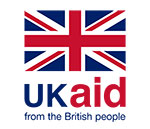The first and the second blogs of our renewable energy series, focused on how ecosystem players and MNOs are using renewable energy (RE) solutions to overcome technical and geographic challenges, expand networks into unconnected areas and lighten operator balance sheets. For this, the third blog in the series, we take the perspective of tower companies (TowerCos) and look at how they consider energy management at their mobile towers.
TowerCos often host multiple tenants at a single site and therefore face several unique energy related challenges not experienced at single-occupant towers. As the number of tenants at a site increases, so too does the power requirement. This, combined with rollouts of newer generations of radio equipment requiring more power, makes defining a site’s power infrastructure difficult, particularly for sites which rely on on-site generation equipment. As well, the need to meet tenants’ varied network requirements mean that optimising the energy efficiency of the radio equipment becomes challenging, especially as the number of tenants at a site increase. Fortunately, however, there are approaches to managing these complex issues sustainably. In this blog we look holistically at mobile tower energy management, what is driving up cell site power demand, the importance of energy efficiency and how solutions like OpenRAN and equipment sharing can produce energy savings. Also, we look at how RE and distributed generation solutions can address the problems caused by under and oversized power systems by facilitating radical approaches to powering towers such as clustering sites and creating mini-grids.
TowerXchange, a global telecom tower trade journal, regularly hosts industry gatherings and shares findings to inform the telecom tower industry. In March 2021, TowerXchange hosted sessions, Greening the Network and Cell Site Energy at its Meetup MENA event. We have invited Matthew Edwards, Head of Research, Europe, Middle East and Africa at TowerXchange to share with us insights from these sessions.
What is increasing power demand on cell sites?
Increasing number of tenants at TowerCo owned cell sites is pushing up power demand. As TowerCos have become more prevalent, sites which were once home to one MNO’s equipment now host the equipment of two or three operators. While some equipment can be shared, each new tenant adds significantly to the power demands for that site. This is more efficient than running parallel infrastructure, but it makes the variance in power demand from site to site much larger, making planning more complex.
Technology upgrades are also boosting power demands. While 3G is more efficient per byte of data than 2G, as is 4G versus 3G, or 5G versus 4G, the actual practical effect of technology upgrades has been to increase power demand as new technologies enable greater and greater use of data.
In some markets, MNOs have retired older 2G and 3G infrastructure, significantly lessening the power load on sites, but in many markets, towers must carry equipment for 2G, 3G, 4G and soon 5G. And because of increasing tenancies a TowerCo can be running multiple technologies for multiple operators. Some newer technology can run multiple Gs at once, but most legacy systems cannot.
Traffic is also increasing across networks, which is prompting a response from MNOs to improve capacity and maintain quality of service. That results in MNOs adding additional antennas or more active equipment which also pushes up power loads to ensure 3G or 4G networks perform as expected by consumers.
Compounding the problem are cooling systems. As power demands increase so do cooling demands which again require power to run. Inefficient systems which require lots of cooling require an oversized cooling solution. Outdoorisation and other alternatives can keep the power required for cooling to a minimum, but it is still better to not generate the heat in the first place to create a win-win situation.
Dimensioning sites is getting harder
Because of the multiple factors which can affect site power demands it is becoming increasingly complex to dimension a new site correctly, particularly where grid power is unreliable. Dimensioning is the process of calculating the appropriate power equipment for a site given its characteristics. Any TowerCo wants to secure tenants for a site rapidly (and increase the power demand on the site), but to install all the equipment necessary to run a multi-tenant multi-technology site from day one would require a major capital outlay. Ensuring sufficient space for expansion and modularity in design are hence vital for dimensioning a site currently.
In Africa, sites are usually dimensioned with energy systems to cater for loads up to 3kW, this enables sites to expand to carry two tenancies while only using 70-80 per cent of total capacity to retain some flexibility and resilience. However, as described above, power demands on sites are increasing rapidly and such rules of thumb will likely soon be out of date. Dimensioning plans which made sense one year ago, can be rendered inadequate if one or more MNO accelerates plans to rollout LTE, for example, as Airtel Africa have done over the last couple of years.
Physical size also plays a major role in dimensioning sites. An on-grid site can benefit from a small battery bank, which can be relied on to provide short-term back-up power. Size becomes an issue for a site which relies on its own primary power. If you want to cycle batteries you need to find space for your generators and batteries. If you want a combined solar hybrid system then you will also need space for solar panels. As site energy demand goes up so does the floor space required for solar panels and for the batteries to store energy when the sun is not shining.
But oversizing is not a solution. Ultimately, TowerCos cannot assume that the multiple inefficiencies pushing site power higher will continue indefinitely. Legacy network equipment is getting swapped out and new sites are being built with new efficient equipment, which radically cuts power demands. Similarly, not all generations of equipment will be required for the long-term as some older tech is turned off or replaced with shareable alternatives. While basic sites may be required to be dimensioned at a higher 3-4kW level in the medium term, attention should turn to the many ways site load can be reduced or power generation made more efficient.
Solution to reducing power load
TowerCos and MNOs have many strategies available to reduce power load on sites, for example, new network technologies from the major OEMs and OpenRAN competitors are able to run multiple generations from one base station, allowing 2G and 3G connectivity to be provided at 150Ws of power. This has enabled firms like Africa Mobile Network to rollout low-cost rural sites which rely solely on solar and storage.
All elements of the power set-up can be shared between tenants, but TowerCos can also start sharing equipment like antennas to reduce extraneous equipment. In Poland, for example, Cellnex is taking control of the RAN for Polkomtel, showing the potential for an enhanced TowerCo model to further increase efficiency.
Site clustering and mini-grids
TowerCo, IHS Towers, has explored a strategy of site clustering to meet the power challenges in its African operations where primary power is often provided by distributed generation, not the grid. This would involve combining the power generation for multiple sites in a central location to solve many of the problems of growing demand.
There is precedent for this in Myanmar and Australia. In Myanmar there are many mini-grid providers serving local areas which see a TowerCo’s site or sites as high-quality anchor tenants. In Australia there are areas which are economically important but far from population centres. Some mines, for instance, run their own private telecom networks which are often powered from a local grid. In Africa, however, there is no history of clustering sites or the powering of a local network by a local mini-grid.
IHS Towers have identified situations where the increased complications of running a small power plant and dealing with local distribution networks (or creating their own) are more than balanced out by the improvement in site performance possible and the increased tenancies and technologies they can service on their towers. These are densely populated areas where site space is constrained but where telecom demand is robust; areas within a two-three kilometre radius where distribution to five-15 sites is manageable.
This would turn the problem of site power on its head, rather than worrying about how to squeeze in 15kW of power generation for the hungriest sites you can start at square one and build a small efficient power plant. This would allow for increased use of solar power, better dimensioning of batteries and more efficient use of generators (which are not best suited to the typical 3kW load of a cell site in any case).
The solution follows from the situation. In Africa, demand for telecoms infrastructure is in some cases outstripping the ability of states to provide supporting infrastructure like power grids. Site clustering is one answer and may become a key tool if 5G is launched and pushes up power demands even higher.
Alternatively, as in Myanmar, TowerCos could become anchor tenants for mini-grids that are being developed. Mini-grids reliant on solar power are a good fit for Africa where usable land can often be found adjacent to densely populated land, solar irradiation is good, and there is a desire to wean the continent off long-term reliance on diesel generators.
The power demands of cell sites are changing all the time, but we are in for a sustained period of increasing power demands, especially as 5G is rolled out faster than old networks are turned off. Where possible renewable generation should help decarbonise power, but this needs to be complimented by using the power generated more efficiently.
In its role as community host TowerXchange regularly hosts industry gatherings (in person and online) and publishes a regular journal, visit the website to learn more.



